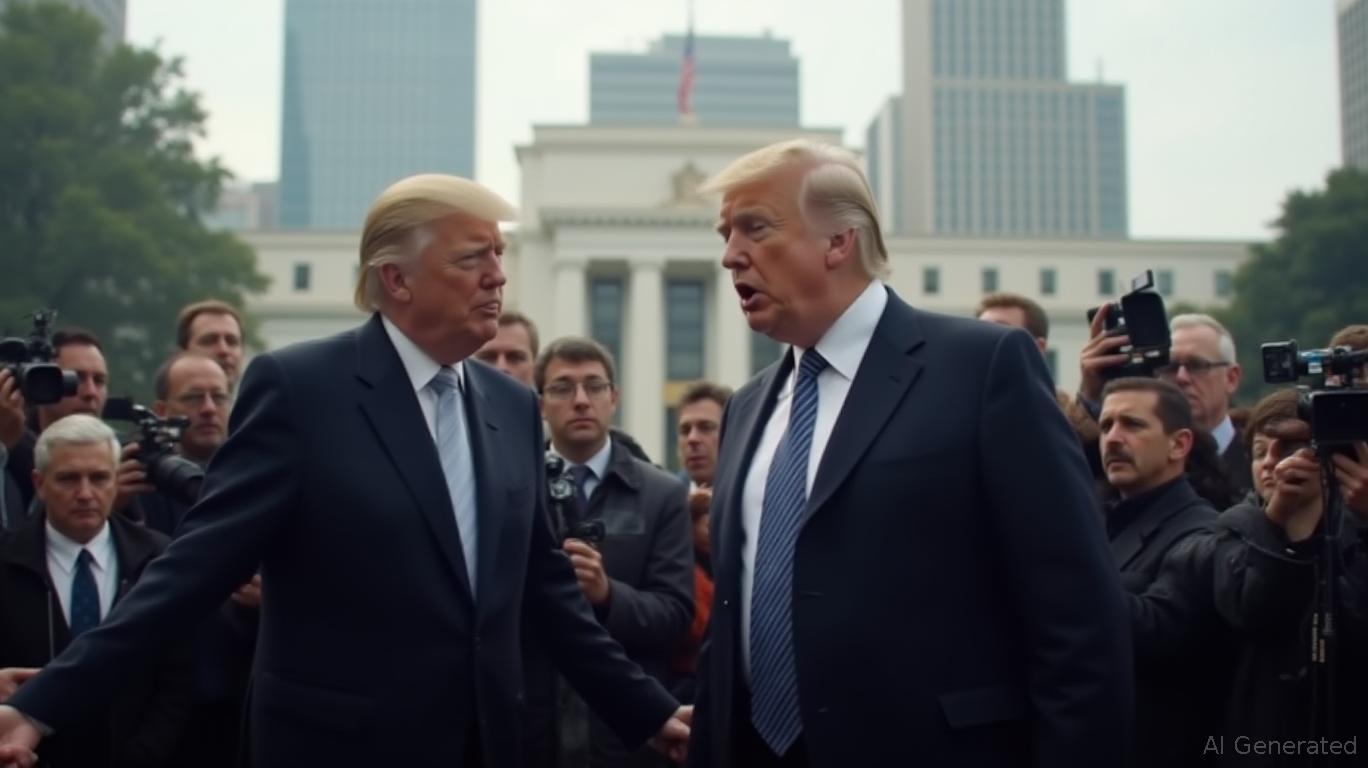Trump's War on the Fed: A Battle for Economic Autonomy Unfolds
- President Trump removed Fed Governor Lisa Cook via Article II authority, citing FHFA's fraud allegations over conflicting mortgage residency claims. - Cook denied wrongdoing and vowed legal action, with the Fed defending its independence through "for cause" removal protections in the 1913 Act. - Critics labeled the move an "authoritarian power grab," warning it risks politicizing monetary policy and repeating 1970s-style economic instability. - Market reactions mixed as bond yields rose and analysts emph
President Donald Trump has issued an order removing Federal Reserve Governor Lisa Cook from her position, asserting constitutional authority under Article II and the Federal Reserve Act of 1913. In a statement posted on his social media platform, Truth Social, Trump cited a “criminal referral” from William Pulte, the Trump-aligned head of the Federal Housing Finance Agency (FHFA), who accused Cook of mortgage fraud. The allegations center on inconsistencies in Cook’s mortgage applications, where she reportedly signed documents claiming two different properties as her primary residences at overlapping times. Cook, the first African American woman to serve as a Fed governor, has denied the claims and stated she learned of the allegations through media reports rather than direct inquiry, vowing not to resign and to challenge the removal in court [1].
The Federal Reserve has responded by emphasizing the legal protections enshrined in the Federal Reserve Act, which stipulates that governors may only be removed “for cause.” The central bank described these long tenures and removal safeguards as a vital component of its independence, ensuring that monetary policy decisions are made on the basis of data and long-term economic interests. Cook’s lawyer has similarly argued that Trump’s removal order lacks any factual or legal foundation and that she will pursue legal action to contest the decision [1].
Trump’s move has drawn sharp criticism from lawmakers and former Fed officials. Senator Elizabeth Warren, the top Democrat on the Banking Committee, condemned the action as an “authoritarian power grab” that violates the Federal Reserve Act and must be overturned in court. Meanwhile, Trump has repeatedly criticized Federal Reserve Chair Jerome Powell over the Fed’s decision to maintain interest rates, accusing him of failing to act in the best interest of American consumers. Trump’s broader effort to influence the Fed’s governance includes the nomination of Stephen Miran, a White House economist, to a seat on the board and the replacement of outgoing governors with Trump-aligned appointees [2].
The potential removal of Cook would give Trump a 4-3 majority on the board of governors, should Miran’s nomination and Cook’s replacement be confirmed. Such a shift could tilt the Fed’s monetary policy toward Trump’s agenda, potentially impacting the central bank’s independence and its ability to make nonpartisan, data-driven decisions. Former Fed official Lael Brainard warned that this kind of political interference could lead to higher inflation and interest rates, echoing the economic turmoil of the 1970s when similar attacks on central bank independence occurred. Brainard also highlighted the chilling effect this could have on Fed officials, deterring open discourse on policy decisions out of fear of political retaliation [3].
The markets have shown mixed reactions to the developments. Long-term US government bond yields have risen, indicating investor concerns about the Fed’s independence and the potential implications for the broader economy. While the US dollar initially dropped following Trump’s announcement, it has since stabilized. Analysts remain divided on how this standoff will ultimately play out, but many stress the importance of maintaining the Fed’s institutional independence to ensure economic stability and long-term public trust [2].
As legal proceedings unfold, the situation raises broader questions about the balance of power between the executive branch and independent regulatory bodies. The Supreme Court’s recent ruling on the Fed’s unique status as a “quasi-private entity” suggests that Trump’s ability to remove board members may be limited. However, the White House appears intent on pushing legal boundaries, with Trump vowing to continue efforts to reshape the Fed in line with his economic priorities. The coming weeks will likely see further developments in both the legal battle and the political dynamics surrounding the Federal Reserve’s governance [3].
Source:

Disclaimer: The content of this article solely reflects the author's opinion and does not represent the platform in any capacity. This article is not intended to serve as a reference for making investment decisions.
You may also like
Bitcoin ETF Inflows Exceed 30,000 BTC as Analysts Warn of Coming Reversal

History Repeats: Altcoin Cap Mirrors 2016 & 2019 — 5 Breakout Picks Targeting 8x–12x Returns

PEPE’s RSI Hits Bottom Again as Traders Eye 0.0000066 for Next Bounce

Bitcoin Needs Just 15% Pump to Trigger $17B Short Squeeze
Bitcoin only needs a 15% move upward to liquidate $17B in shorts, setting the stage for a potential explosive short squeeze.$17 Billion in Shorts at Risk as BTC Nears Critical LevelWhy the Market Is Watching CloselyIs a Short Squeeze Imminent?
